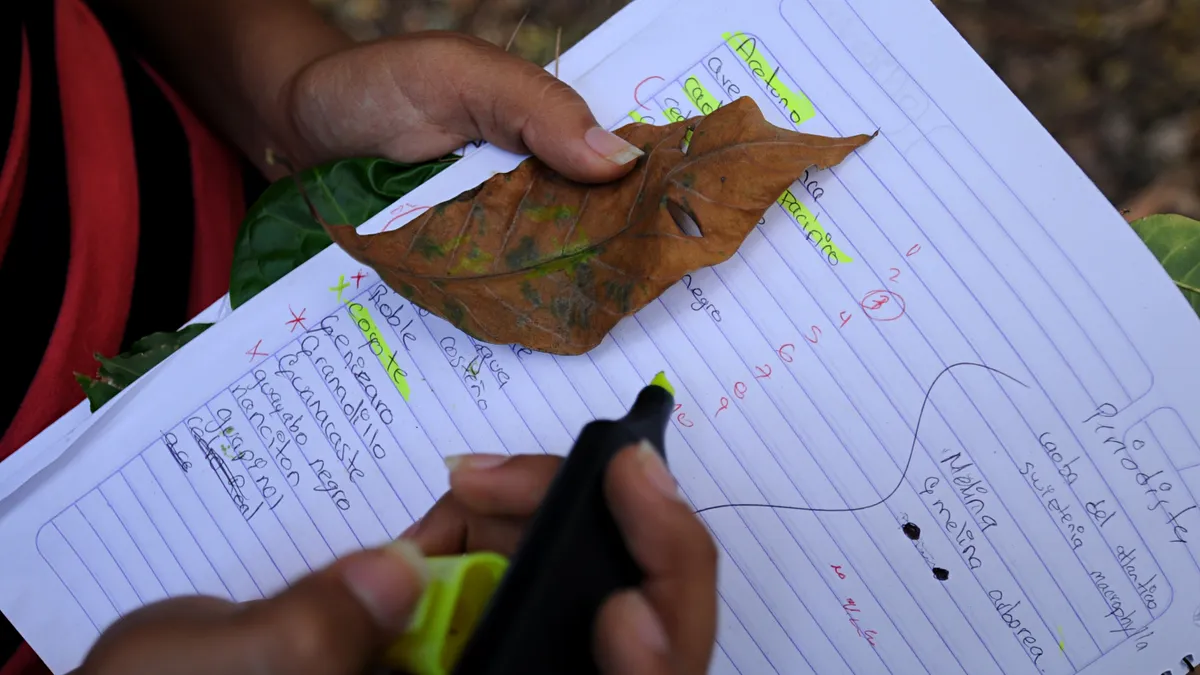In December, New York adopted new science learning standards, modeled closely on the Next Generation Science Standards. Among those students learning science through these new standards will be New York’s 240,000 English learners – nearly 9% of the student population.
Student demographics across the U.S. are changing, and English learners make up a fast-growing subset of the student population. For the 2013-14 school year, the latest available information, English learners constituted nearly 10 percent of public school students, or an estimated 4.5 million students.
Learning academic content can be a challenge for students who have not yet mastered the English language, especially when it comes to science. But too often, instruction with English learners focuses on the development of vocabulary and grammar rather than authentic engagement with science disciplines. English learners cannot wait until they have mastered English language to begin learning science.
New ideas of language learning call into question this narrow focus on vocabulary and grammar. Recent research shows that language learning occurs not as a precursor but as a product of using language for purposeful communication. "Doing" science and engineering practices inherently involve using language. For instance, students use language when they develop models, construct explanations, and argue from evidence. As students use language to do science, they learn science and language simultaneously.
A new science education initiative
Released in 2013, the Next Generation Science Standards aim to improve science education for all students. As of December 2016, 18 states and the District of Columbia (representing over 35 percent of the students in the U.S.) adopted the NGSS. Other states, like New York, adapted the NGSS.
The NGSS give a purpose to science learning by expecting all students to explain natural phenomena (science) and solve human needs or wants (engineering). Students engage in science and engineering practices, as they ask questions, develop models, plan and carry out investigations, analyze and interpret data, use mathematics and computational thinking, explain their ideas, argue from evidence, and evaluate and communicate information. Through engaging in such practices, students come to understand core ideas in science disciplines and broad concepts, such as patterns and systems, that cut across science disciplines.
How can students develop language while learning science?
The NGSS provide opportunities not only for rigorous science learning but also for rich language use. An example of this was found in a second grade class with 80 percent English learners who were investigating soil in their schoolyard in Madison, Wisconsin.
The students’ observations motivated them to find out whether all soil was the same. In a homework assignment, they asked their families this question in an interview and discussed the soil in different parts of the U.S. and in their home countries.
A grandmother from Laos visited the class. Through a school translator, she described the rich soil in the rice fields in Laos and guided students to consider how corn grew in the sandy soil in Wisconsin. After learning that soil was different around the world, they wondered if it was also different in their own neighborhood.
Using aerial and topographic maps, students chose three locations within walking distance of their school, including their schoolyard, a coniferous hill, and an urban marsh. After taking field notes, student groups worked on soil profile models of each site, presented their models to the whole class, and discussed patterns they found.
Then, the students were given three unidentified soil samples that came from the three sites under investigation. Using the models, they developed claims, based on evidence, as to where the soil came from.
The students found that the soil in the urban marsh under a highway had a lot of trash and sand. They argued that the trash ended up in the soil because wind blew it there, and also the sand ended up in the soil because rain washed it away from the highway. They cared about this soil because it was right next to the apartments where many of them lived.
The students' findings led them to consider solutions to this problem, which involved engineering. To stop wind and rain from changing the soil, one student wrote, “We can make a hug [sic] house,” and the student drew a tent with people inside.
A new vision for learning science and language
So, how did this class of second grade English learners learn science and language simultaneously? Students were scientists as they asked a question about soil in their neighborhood, used their field notes to collect data about soil, developed models of soil profiles, discussed patterns across the models, and provided evidence for their reasoning. They were engineers as they designed solutions to the problem of trash and sand.
And, throughout the whole time, young English learners were acquiring language in the context of doing science and engineering. Research shows that English learners can participate meaningfully using less-than-perfect English in environments that emphasize collaboration and community. The students also communicated using drawings, diagrams, tables, graphs, charts, and texts. In fact, in learning science, visual representations are as important as textual forms. While investigating a phenomenon relevant to their lives, young English learners were able to draw on cultural and linguistic resources from their homes and communities.
Although there is foundational research, learning science according to the NGSS is new. Learning language while it is being used to learn science is even more so. Realizing this vision for promoting rigorous science learning and rich language use with English learners will require innovative approaches to classroom teaching, curriculum design, assessment, and teacher preparation and professional development. As the education system embarks on this new vision, there is the exciting potential to meet the needs of all students in our increasingly diverse classrooms.
Okhee Lee is a professor of Childhood Education at New York University's Steinhardt School of Culture, Education, and Human Development.




















